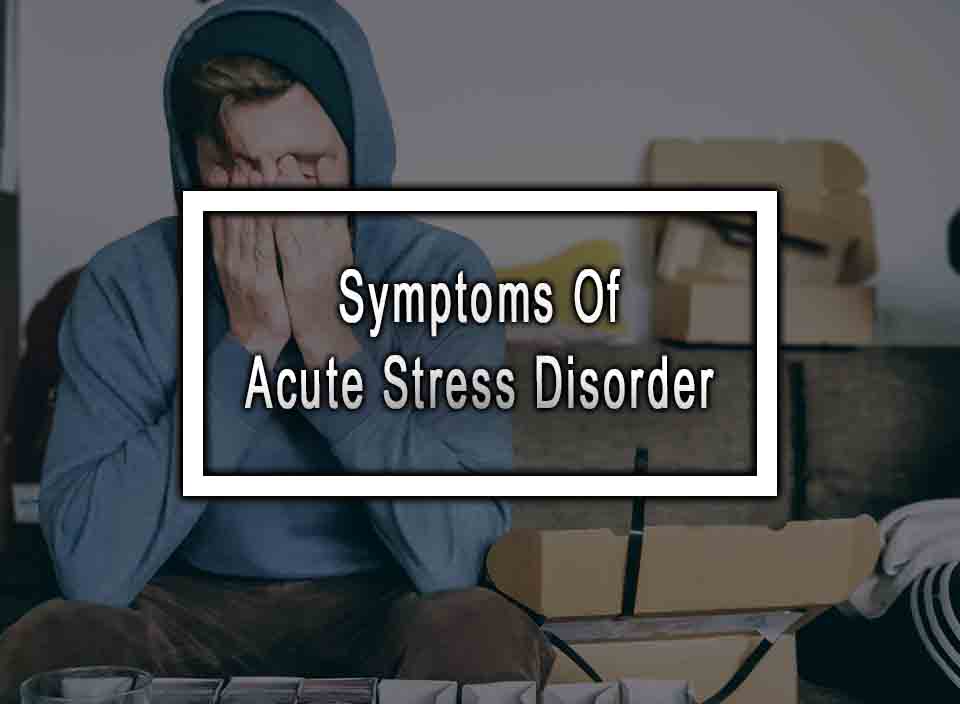Table of Contents
ToggleCommon Symptoms of Acute Stress Disorder You Should Be Aware Of
Acute stress disorder (ASD) is a type of anxiety disorder that can develop after a traumatic event. If left untreated, it can lead to post-traumatic stress disorder (PTSD). The symptoms of ASD can vary in severity and can affect anyone who has experienced or witnessed a traumatic event. In this listicle, we’ll be discussing 10 common symptoms of ASD that you should be aware of.
Intrusive Thoughts
One of the hallmark symptoms of ASD is intrusive thoughts. These can be in the form of flashbacks or nightmares that continue to plague the sufferer. They are often triggered by a sound, smell, or association with the traumatic event.
Avoidance behavior
Another common symptom is avoidance behavior. Sufferers will try to avoid anything that reminds them of the traumatic event. This can mean avoiding certain people, places, or things.
Hypervigilance
Hypervigilance is a state of constant alertness or heightened awareness that results from PTSD. This can manifest itself in various ways such as restlessness, irritability, or being easily startled.
Anxiety
Anxiety is a common symptom of ASD. This can be generalized anxiety or specific anxiety related to the traumatic event.
Dissociation
Dissociation occurs when the sufferer feels disconnected from reality as if they are watching the traumatic event from afar.
Physical symptoms
Physical symptoms can include headaches, stomach aches, and fatigue. These symptoms are often caused by the constant state of arousal and tension that accompanies ASD.
Mood Changes
Mood changes are common symptoms of ASD. These can include sadness, anger, guilt, and depression.
Numbing
Numbing is a way of avoiding the pain of a traumatic event. Sufferers may feel numb and detached from reality.
Re-experiencing
Re-experiencing is when the sufferer relives the traumatic event through vivid flashbacks, dreams, or intrusive thoughts.
Time Distortion
Time distortion is a common symptom that can make it feel like the traumatic event is happening again and again.
Conclusion
If you or a loved one is experiencing any of these symptoms, it’s important to seek help from a mental health professional. While ASD can be a difficult disorder to live with, it can be treated with the right combination of therapy and medication. Don’t suffer in silence, reach out and get the help you need.
Acute Stress Disorder FAQ
Here are the most common questions about acute stress disorder.
What causes Acute Stress Disorder?
Acute Stress Disorder is usually caused by exposure to or witnessing a traumatic event, such as a natural disaster, physical or sexual assault, car accident, or military combat.
How is Acute Stress Disorder Diagnosed?
A mental health professional will diagnose ASD based on the patient’s symptoms and history. The DSM-5 criteria outline the specific symptoms required for a diagnosis.
What is the treatment for Acute Stress Disorder?
The treatment for Acute Stress Disorder may include therapy, such as cognitive-behavioral therapy, exposure therapy, and eye movement desensitization and reprocessing (EMDR). Medications may also be prescribed to manage the symptoms.
How long does Acute Stress Disorder last?
Acute Stress Disorder typically lasts from three days to one month after the traumatic event. If symptoms persist beyond one month, a diagnosis of PTSD may be considered.
How can Acute Stress Disorder be prevented?
Prevention of Acute Stress Disorder involves reducing the risk of exposure to traumatic events and promoting healthy coping mechanisms and resilience. Early intervention and support for those who have experienced a traumatic event can also help prevent Acute Stress Disorder.
More like this: 10 Signs You May Have Adjustment Disorder












